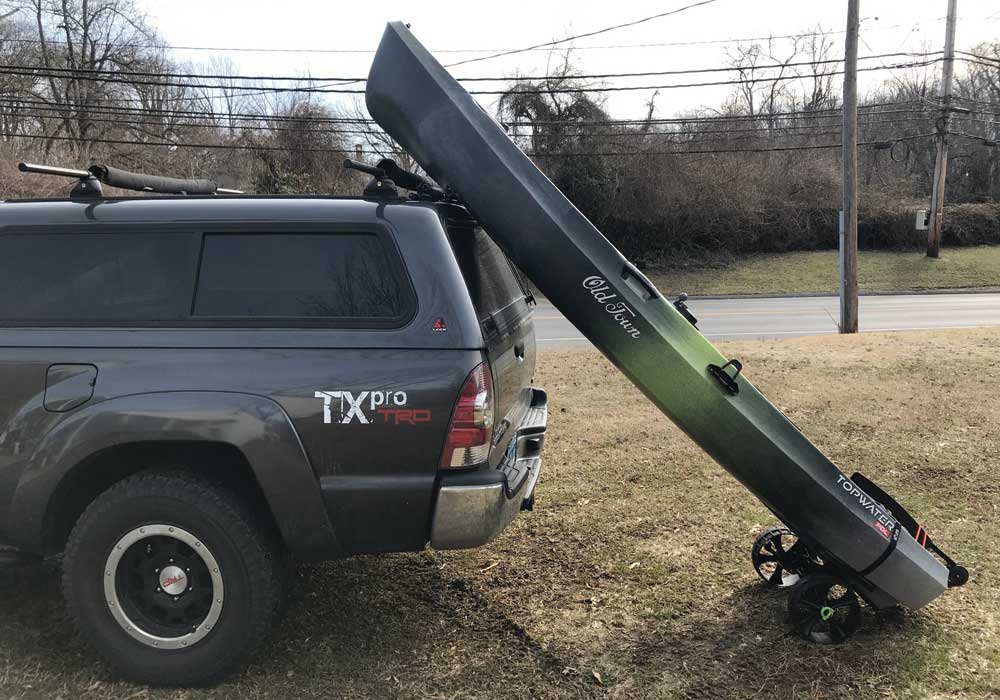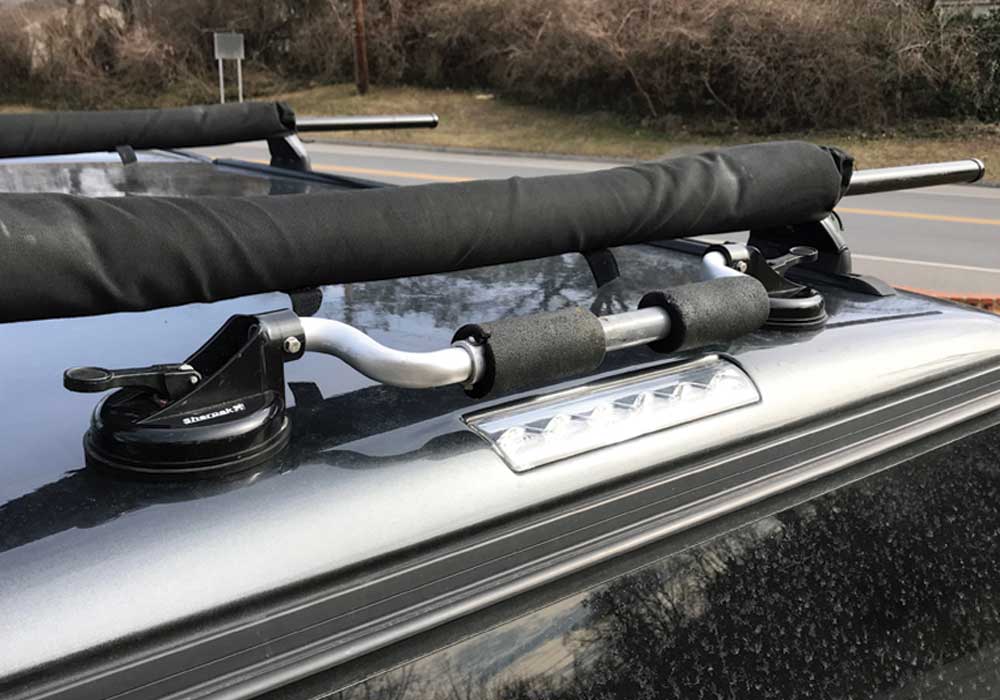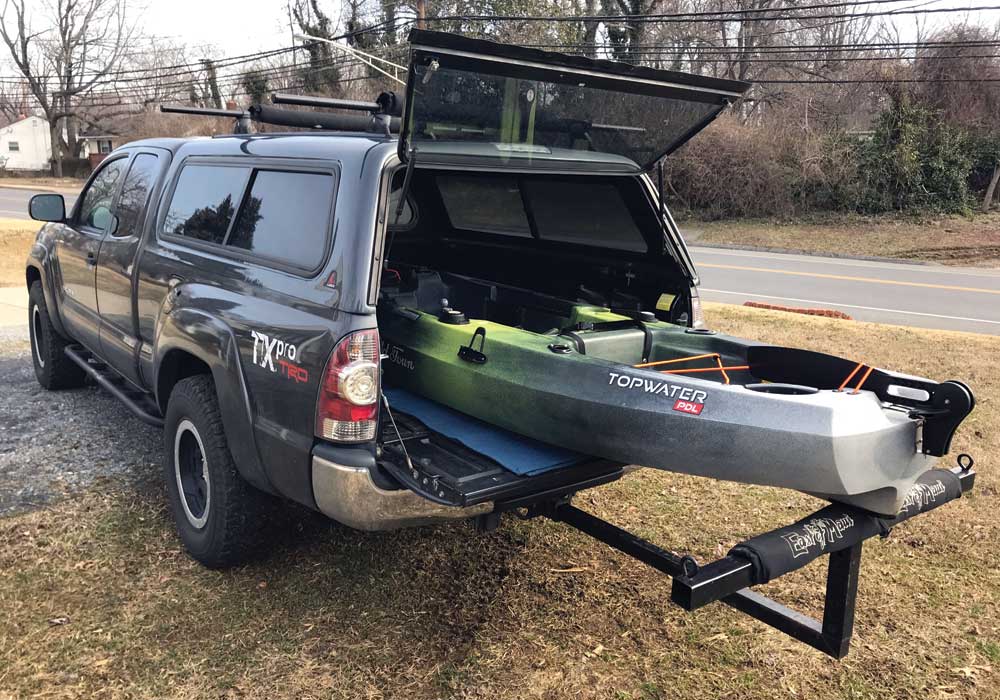For many anglers, the mobility factor is a huge draw for getting into kayak fishing. You can transport a kayak with virtually any type of vehicle and launch it at any public soft launch or boat ramp. But most sit-on-top fishing kayaks these days weigh in at over 70 pounds, and getting them around on land can be a challenge. You probably have a system for loading and unloading your boat, but here are a few tips that will save you from breaking your back while loading your yak single-handedly.

Kayak Carts
To avoid any unecessary wear when dragging your boat around it is wise to invest in a good quality cart for transporting your kayak over land.
- The C-Tug is one of the most versatile carts on the market, but it does come with a hefty price point. It is made entirely of durable plastic and features adjustable pads that accomodate most kayak hulls. The C-Tug can be disassembled in minutes without the use of tools and stowed in relatively small hatch compartments. This cart’s SandTrakz wheels work great for beach launching.
- There are numerous scupper carts available which are quick and easy to install since no straps are required; though you should use caution hauling a loaded kayak over long distances. These carts can stress the scuppers and result in cracks.
- The trail trekker style has a low profile design that supports the keel of the kayak on the axle of the cart. This is a great cart for long hauls, and for the DIYers this can be made easily from hardware store parts.
TIP: Having multiple cart styles is key so that you always have the right one for the launch.

Rooftop Rack Systems
Toting your yak on the roof of your vehicle is the best option for transport and really the only option if you do not have a truck.
- If you don’t have a big budget but want to get out on the water, you can purchase some foam block cradles for your roof. They feature a non-skid bottom and have a notch cut out if you want to attach them to a crossbar. These usually come in a kit that includes cam lock tie-down straps. If you don’t have a rack, you’ll need to open your doors and run the straps through the cabin of your vehicle.
- Investing in a set of crossbars is the way to go if you plan on doing a lot of travelling to fishing destinations. You’ll want a solid rack that will hold on to your investment when travelling at highway speeds. You can’t go wrong with any of the top name brands, and you can often find great secondhand deals. Adding cradles is a good idea, but sometimes they create pressure points on the hull. Flipping your boat upside-down on the rack will be the most secure. You’ll want to make sure you have some rack pads around your bars, or use pool noodles if you want to take the budget route.
TIP: Loading from the back of your vehicle is optimal when you are singlehanded. The trick here is avoiding lifting your heavy kayak up onto the rack. Utilizing your cart along with a rooftop roller, such as the Sherpak Boat Roller, enables you to slide the yak right up onto the roof without any lifting. Some higher end roof racks have rollers built in.
Sideloader Racks
- The Thule Hullavator and Yakima Showdown have lift assist designs that swing down to the side of your vehicle. You’ll have to lift your kayak to about shoulder height to place in the cradle, and the rack swings back up on top.
- Another sideloader rack is the Malone Telos XL. This load assist system uses two bars fitted with J-bars that extend to the ground and connect to your roof rack crossbars. You only need to lift the kayak a few feet off the ground into the cradles, and then you ratchet it up the ramp and slide it onto the roof.
TIP: These sideloader systems are a bit pricy and will cost you hundreds to install on your vehicle. If you are on a budget for a rooftop system, the cart and roller method is the way to go.

Truck Bed Transport
- If you have a pickup truck, the absolute easiest solution for transport is to slide it right into the bed of the truck. If you have a shorter kayak, you may be able to just strap it down to your padeyes.
- For a longer kayak a hitch-mount bed extender is the way to go. Add some rack pads, and slide your yak on in. The disadvantage is that you cannot lock up overnight, and also some parking situations may be a little challenging with the added vehicle length.
TIP: You can acquire a bed extender for about $60 at Harbor Freight or spend a little more for a deluxe version from one of the top brands.
~ By Zach Ditmars
For more on kayak transportation, check out Eric Packard's Kayak Fishing Travel Tips